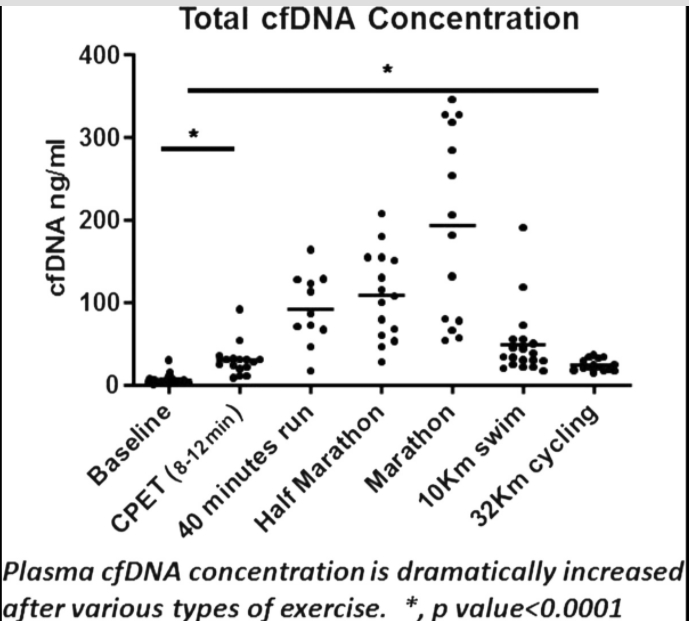The Effect Of Various Types Of Exercise On Cell-free Circulating DNA
Constantini, Naama W. Medicine & Science in Sports & Exercise: July 2020 - Volume 52 - Issue 7S - p 1103-1104
Elevated levels of cell-free circulating DNA fragments (cfDNA) released from dying cells into the blood stream have been established as a reliable biomarker in multiple pathologies such as trauma, heart attack, cancer and inflammation. Acute exercise also causes an immediate increase in the concentration of cfDNA in the blood. The cellular origins and the physiological significance of this phenomenon are not understood, but it has been speculated that cfDNA in exercise may reflect the intensity of the effort and potentially indicate overtraining.
PURPOSE: The aim of the study was to compare the level of cfDNA after different types of exercise, and to identify their source.
METHODS: We have used a methylation-based approach to assess the tissue sources of blood cfDNA of 75 subjects, men and women, ages 17-46 years, before and after the following exercise activities: Graded maximal exercise test (8-12 min; n=16), 40 minutes moderate-intensity run (n=12) half marathon (21.1km; n=15), marathon (42.2 km; n=14), cycling time trial (32 km; n=15) and open water swimming (10 km; n=19).
RESULTS: Our analysis revealed a significant (P<0.0005) elevation of cfDNA after strenuous exercise which varied between sport modalities (Figure). CfDNA levels returned to near-baseline within 60 minutes post exercise, and derived exclusively from neutrophils and not from myocytes or other tissues.
CONCLUSIONS: The origin of the blood cfDNA in response to physical activity stems exclusively from neutrophils, with a large difference in its amount following various types of exercise. We are currently attempting to understand the physiological mechanisms of this exercise induced elevated cfDNA, including heart rate, blood pressure, type of muscle activity, blood oxygen levels, body temperature etc. Our findings open an exciting window into inflammatory and other physiologic processes taking place during exercise, and shed light on new aspects of cfDNA biology.














